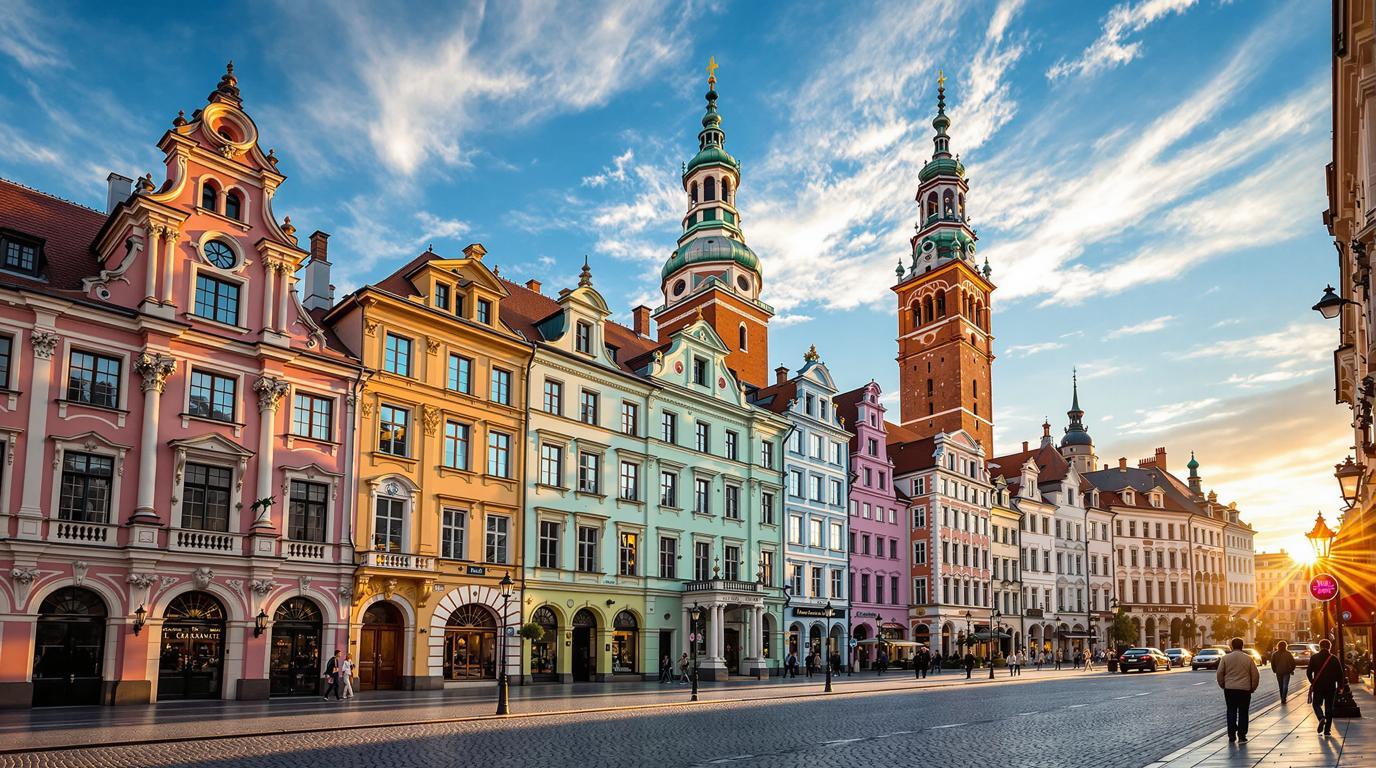The rebirth of Warsaw’s Old Town stands as one of Europe’s most remarkable reconstruction stories. Almost completely obliterated during World War II, this UNESCO World Heritage site rose from the ashes to become Poland’s most captivating historical district. Located in the Mazovie region just 10km from Warsaw’s international airport (WAW), Stare Miasto offers visitors a time-traveling experience through meticulously rebuilt Renaissance and Baroque architecture.
A phoenix from the ashes: Warsaw’s incredible resurrection
When Nazi forces retreated from Warsaw in 1944, they left behind a haunting wasteland – 90% of Old Town had been systematically destroyed. What followed was perhaps history’s most ambitious architectural resurrection project. Using pre-war photographs, paintings, and architectural plans, Polish craftsmen rebuilt Stare Miasto brick by brick between 1949 and 1963.
“The reconstruction wasn’t just about buildings – it was about reclaiming our identity,” explains Maria Kowalski, a local historian. “Every stone tells a story of Polish resilience.”
Today, walking through the colorful merchant houses surrounding Market Square (Rynek Starego Miasta), it’s almost impossible to believe this entire district is essentially a 20th-century recreation. This achievement earned Warsaw’s Old Town its UNESCO World Heritage status in 1980.
Royal grandeur and medieval charm
The imposing Royal Castle dominates the eastern edge of Old Town, its brick-red façade and clock tower serving as Warsaw’s symbolic heart. Once home to Polish monarchs, the castle now houses museum collections featuring works by Rembrandt and Canaletto. Inside, the meticulously reconstructed royal apartments showcase the opulence of Poland’s golden age.
Nearby, St. John’s Archcathedral represents one of Poland’s most important Gothic structures. Dating to the 14th century but rebuilt after WWII, its soaring nave witnessed centuries of royal coronations and national ceremonies. History enthusiasts will find similar medieval charm in other European medieval treasures that have survived the centuries.
Summer magic: May through September
While Warsaw captivates year-round, the Old Town truly comes alive from May through September. Summer evenings transform the cobblestone streets into an open-air festival of sorts, with café tables spilling onto sidewalks and street musicians providing the soundtrack. The golden light of long summer days bathes the pastel-colored buildings in a warm glow reminiscent of France’s ochre villages at sunset.
During these months, the sprawling Castle Square hosts outdoor concerts, cinema screenings, and cultural performances. Meanwhile, restaurants around Market Square serve traditional Polish fare on outdoor terraces – the perfect spot to sample pierogi (filled dumplings) or bigos (hunter’s stew) while people-watching.
Hidden corners and local secrets
Beyond the main squares, Stare Miasto rewards explorers with tucked-away treasures. The narrow Kanonia Street leads to a charming triangular square featuring Warsaw’s narrowest house and a historic bell said to grant wishes when circled three times.
“Most tourists stick to the main square, but Warsaw’s soul lives in its side streets,” reveals Tomasz Nowak, a local guide. “That’s where you’ll find our favorite cafés and the remaining fragments of the original medieval walls.”
For panoramic views rivaling Greece’s most spectacular harbors, climb the tower of St. Anne’s Church. The modest entrance fee rewards you with breathtaking vistas over Old Town’s terracotta rooftops and the modern city beyond.
Warsaw beyond the postcards
While Old Town captivates, Warsaw’s story extends beyond its reconstructed center. The former Jewish ghetto area provides profound historical context, while the Praga district across the Vistula River offers industrial-chic galleries and bars in converted factories. Like certain hidden French masterpieces, these areas remain relatively tourist-free.
Warsaw’s blend of painful history and triumphant rebirth creates a destination unlike any other in Europe. In Stare Miasto, you’re not merely visiting a well-preserved medieval town – you’re experiencing a powerful testament to human determination and cultural identity. Much like Peru’s ancient cosmic observatories, Warsaw’s Old Town continues to inspire wonder at what humans can achieve against overwhelming odds.
